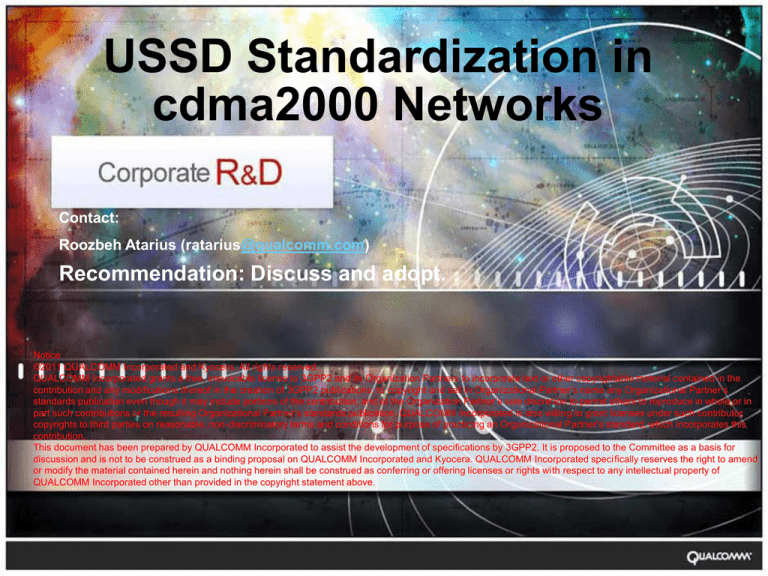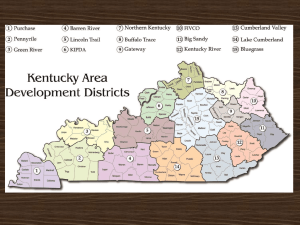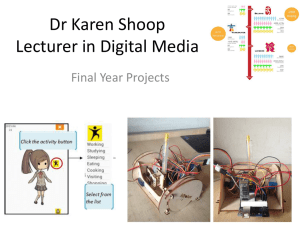
USSD Standardization in
cdma2000 Networks
Contact:
Roozbeh Atarius (ratarius@qualcomm.com)
Recommendation: Discuss and adopt.
Notice
©2011 QUALCOMM Incorporated and Kyocera. All rights reserved.
QUALCOMM Incorporated grants a free, irrevocable license to 3GPP2 and its Organization Partners to incorporate text or other copyrightable material contained in the
contribution and any modifications thereof in the creation of 3GPP2 publications; to copyright and sell in Organizational Partner’s name any Organizational Partner’s
standards publication even though it may include portions of the contribution; and at the Organization Partner’s sole discretion to permit others to reproduce in whole or in
part such contributions or the resulting Organizational Partner’s standards publication. QUALCOMM Incorporated is also willing to grant licenses under such contributor
copyrights to third parties on reasonable, non-discriminatory terms and conditions for purpose of practicing an Organizational Partner’s standard, which incorporates this
contribution.
This document has been prepared by QUALCOMM Incorporated to assist the development of specifications by 3GPP2. It is proposed to the Committee as a basis for
discussion and is not to be construed as a binding proposal on QUALCOMM Incorporated and Kyocera. QUALCOMM Incorporated specifically reserves the right to amend
or modify the material contained herein and nothing herein shall be construed as conferring or offering licenses or rights with respect to any intellectual property of
QUALCOMM Incorporated other than provided in the copyright statement above.
Documentations in 3GPP2 and 3GPP
•
USSD is abbreviation for Unstructured Supplementary Service
Data.
Specifications in 3GPP are TS22.090 (stage 1), TS23.090 (stage
2), and TS24.090 (Stage3).
Other related specifications are TS22.030 for MMI for USSD and
TS23.038 for the alphabet indicator and data coding scheme.
TS24.010 (Stage 3) for Mobile radio Interface layer3.
Documents in 3GPP2
•
•
•
Page 2
X.S0065 (USSD specification)
CR.1001 to add new DBM.
A.S0013 to include the Delivery mechanism of the new DBM
A.S0014 to include the precedures for the new DBM
X.S0004-641-E to include a new ServiceIndicator parameter for USSD.
Changes to C.R1001
• Add a new DBM for Unstructured Supplementary Service Data with
value “001001”.
• Add service option numbers 77 for USSD Rate Set 1 and 78 for
USSD Rate Set 2.
• Add service option group 10 for USSD.
• Add reference to X.S0065
Page 3
Changes to A.S0013
• 2.44 USSD Support
The Unstructured Supplementary Service Data (USSD) for the
transfer of the messages within the USSD transaction between the
MS and USSD GW. The procedures for USSD is described in
X.P0065.
Page 4
Changes to A.S0013 (1/11)
3.39 Unstructured Supplementary Services Data (USSD)
3.39.1 USSD DBM Delivery on a Common Channel
3.39.1.1 USSD DBM Receipt from an MS on the Access Channel
a. The MS sends a USSD DBM to the network on the Access Channel.
b. If the MS had requested a Layer 2 Ack, the BS acknowledges the USSD DBM received on the Access Channel
by sending a Layer 2 Ack on the Paging Channel.
c. The BS sends an ADDS Transfer message to the MSC containing the USSD DBM received from the MS in the
ADDS User Part element.
Page 5
Changes to A.S0013 (2/11)
3.39.1.2 USSD DBM Delivery to an MS on a Common Channel Example1
a. The MSC determines that a USSD DBM is to be sent to an idle MS.
The MSC sends an ADDS Page message to the BS. The ADDS Page contains the USSD DBM in its ADDS User
Part information element.
If the MSC requires an acknowledgment, it includes the Tag information element in the ADDS Page message
and starts timer T3113.
b. The BS sends the USSD DBM to the MS on the Paging Channel or the Forward Common Control Channel.
Before sending the USSD DBM, the BS may perform vendor specific procedures such as paging the MS to
determine the cell in which the MS is located.
c. If a Layer 2 Ack was solicited, the MS acknowledges the receipt of the message by a Layer 2 Ack.
d. If the MSC requested an acknowledgment by including the Tag information element in the ADDS Page message,
the BS replies with an ADDS Page Ack message including the Tag information element set identical to the value
sent by the MSC. If timer T3113 was previously started, it is now stopped.
Page 6
Changes to A.S0013 (3/11)
3.39.1.3 USSD DBM Delivery to an MS on a Common Channel Example 2 (without Early Traffic Channel Assignment)
Page 7
Changes to A.S0013 (4/11)
a.
b.
c.
d.
e.
f.
g.
h.
i.
j.
k.
Page 8
The MSC sends a Paging Request message to the BS and starts timer T 3113.
The BS sends a Page Message on the Paging Channel.
The MS responds with a Page Response Message.
The BS sends a Complete Layer 3 Information message containing a Paging Response message to the MSC
and starts timer T303. Upon receipt of this message the MSC stops timer T 3113.
The BS sends a Base Station Ack Order to acknowledge the Page Response Message from the MS.
The Radio Environment and Resources element in the Paging Response message indicates no early traffic
channel assignment by the BS. The MSC sends an ADDS Page message to the BS. The ADDS Page message
contains the USSD DBM in its ADDS User Part information element.
If the MSC requires an acknowledgment, it includes the Tag information element in the ADDS Page message
and starts timer T3113.
The BS sends the USSD DBM to the MS on either the Paging Channel or the Forward Common Control
Channel.
If a Layer 2 Ack was solicited, the MS acknowledges the receipt of the message by a Layer 2 Ack.
If the MSC requested an acknowledgment by including the Tag information element in the ADDS Page message,
the BS replies with an ADDS Page Ack message including the Tag information element set identical to the value
sent by the MSC. If timer T3113 was previously started, it is now stopped.
The MSC releases the underlying transport connection to clear the pending page response. The BS stops timer
T303 during this process.
The BS, upon the release of the underlying transport connection, sends a Release Order to the MS.
Changes to A.S0013 (5/11)
• 3.39.1.4 USSD DBM Delivery to an MS on a Common Channel Example 3 (with Early Traffic Channel Assignment)
Page 9
Changes to A.S0013 (6/11)
a.
b.
c.
d.
The MSC sends a Paging Request message to the BS and starts timer T 3113.
The BS sends a Page Message on the Paging Channel.
The MS responds with a Page Response Message.
The BS sends a Complete Layer 3 Information message containing a Paging Response message to the MSC
and starts timer T303. The MSC stops timer T3113.
e. The BS sends a Base Station Ack Order to acknowledge the Page Response Message from the MS.
f. The BS establishes a traffic channel to the MS.
g. The Radio Environment and Resources element in the Paging Response message indicates early traffic channel
assignment by the BS. The MSC refuses the underlying transport connection. The BS stops timer T 303.
h. The BS, upon the refusal of the underlying transport connection, sends a Release Order to the MS.
i. The MS sends a Release Order to the BS to acknowledge the release.
j. The MSC sends an ADDS Page message to the BS. The ADDS Page contains the USSD DBM in its ADDS User
Part information element. Note that the MSC should wait a sufficient amount of time after step ‘g’ before sending
this message, to allow steps ‘h’ and ‘i’ to complete.
If the MSC requires an acknowledgment, it includes the Tag information element in the ADDS Page message
and starts timer T3113.
k. The BS sends the USSD DBM to the MS on either the Paging Channel or Forward Control Channel.
l. If a Layer 2 Ack was solicited, the MS acknowledges the receipt of the message by a Layer 2 Ack.
m.If the MSC requested an acknowledgment by including the Tag information element in the ADDS Page message,
the BS replies with an ADDS Page Ack message including the Tag information element set identical to the value
sent by the MSC. If timer T3113 was previously started, it is now stopped.
Page 10
Changes to A.S0013 (7/11)
3.39.1.5 USSD DBM Delivery to an MS on a Common Channel Example 4 using Registration Procedures
Page 11
Changes to A.S0013 (8/11)
a.
b.
c.
d.
The MSC sends a Registration Request message to the BS and starts timer T ordreg.
The BS sends a Registration Request Order on the common signaling channel.
The MS responds with a Registration Message.
The BS sends a Complete Layer 3 Information message containing a Location Updating Request message to
the MSC and starts timer T3210. The MSC stops timer Tordreg.
e. The MSC sends a Location Updating Accept message to the BS. The BS stop timer T 3210. This message
releases the underlying signaling connection.
f. The BS may optionally send a Registration Accept Order to the MS.
g. The MSC sends an ADDS Page message to the BS. The ADDS Page contains the USSD DBM in its ADDS User
Part information element. If the MSC requires an acknowledgment, it includes the Tag information element in the
ADDS Page message and starts timer T3113.
h. The BS sends the USSD DBM to the MS on either the Paging Channel or Forward Control Channel.
i. The MS acknowledges the receipt of the message by a Layer 2 Ack.
j. If the MSC requested an acknowledgment by including the Tag information element in the ADDS Page message,
the BS replies with an ADDS Page Ack message including the Tag information element set identical to the value
sent by the MSC. If timer T3113 was previously started, it is now stopped.
Page 12
Changes to A.S0013 (9/11)
3.39.2 USSD DBM Delivery on theTraffic Channel
3.39.2.1 USSD DBM to an MS on a Traffic Channel
time
MSC
BS
MS
Mobile is on a traffic channel
ADDS Deliver
Data Burst Message
b
c
Layer 2 Ack
d
ADDS Deliver Ack
Mobile is on a traffic channel
Page 13
a
e
f
comment
Changes to A.S0013 (10/11)
a. The MSC determines that a USSD DBM is to be sent to the MS while it is on the traffic channel. Alternatively, if
the MS is not on a traffic channel, a USSD-MT call is established using call flows in section 3.1.2; the service
option used in this case is either ‘4DH’ or ‘4EH’.
b. The MSC sends an ADDS Deliver message to the BS. The ADDS Deliver message contains the USSD DBM in
the ADDS User Part element.
c. The BS transmits the USSD DBM over the forward traffic channel. If the BS does not receive an
acknowledgment after transmitting the USSD DBM, it shall retransmit the message. If the BS reaches the
maximum number of retransmissions, it shall declare a Layer 2 Ack failure and initiate call clearing.
d. The MS acknowledges delivery of the USSD DBM on the traffic channel with a Layer 2 Ack.
e. If the MSC has requested a response by including the tag element in the ADDS Deliver message, the BS replies
with an ADDS Deliver Ack message when it has received acknowledgment from the MS that the message was
delivered. If a Tag element was included in the ADDS Deliver message, the BS shall include the Tag element in
the ADDS Deliver Ack message, and set it to the same value as that received in the ADDS Deliver message.
f. The MS may remain on the traffic channel (e.g. if a voice call is in progress in step ‘a’). Alternatively, the MSC
may initiate call clearing if a traffic channel was established in step ‘a’ using SO ‘4DH’ or ‘4EH’. Refer to section
3.2.4.3.
Page 14
Changes to A.S0013 (11/11)
• 3.39.2.2 USSD DBM Receipt from an MS on a Traffic Channel
a. An MS that is currently on a traffic channel determines that a USSD DBM is to be sent to the network.
Alternatively, if the MS is not on a traffic channel, a USSD-MO call is established using call flows in section
3.1.1.1; the service option used in this case is either ‘4DH’ or ‘4EH’.
b. The BS receives a Traffic Channel USSD DBM from an MS on the traffic channel.
c. If a Layer 2 Ack was requested by the MS, the BS sends a Layer 2 Ack to the MS on the traffic channel.
d. The BS sends an ADDS Deliver message to the MSC. The ADDS User Part element contains the USSD DBM
which was received from the MS.
e. The MS may remain on the traffic channel (e.g. if a voice call is in progress in step ‘a’). Alternatively, the MS may
initiate call clearing if a traffic channel was established in step ‘a’ using SO ‘4DH’ or ‘4EH’. Refer to section
3.2.4.1.
Page 15
Changes to A.S0014 (1/8)
2.6.1.1
Successful Operation
When the MSC determines that it needs to deliver an SMS message to a specific idle MS, and a Layer 2 Ack notification is
required from the MS, the MSC sends the ADDS Page message containing a Tag IE to the BS, starts timer T 3113, and waits for
the ADDS Page Ack message.
When the MSC determines that it needs to deliver an SMS message to a specific idle MS, and the MSC does not require a
Layer 2 Ack notification, the MSC sends the ADDS Page message, without a Tag IE, to the BS.
The Tag IE, when present, indicates to the BS that a Layer 2 Ack is required from the MS. It can be used by the MSC to
uniquely identify the ADDS Page message. If the Tag IE is present in the ADDS Page message, then the BS shall save it and
return the same value in the Tag IE of the ADDS Page Ack message.
When the MSC determines that it needs to deliver an SMS Broadcast message, and the MSC desires a response from the BS,
the MSC starts timer T3113, sends the ADDS Page message containing a Tag element to the BS, and waits for the ADDS Page
Ack message. The Tag IE, when present indicates to the BS that an ADDS Page Ack response message is requested.
However, the BS is not required to solicit Layer 2 Acks from the MS. If the Tag element is present, the BS shall save it and
return the saved value in the Tag IE of the ADDS Page Ack message.
If the MSC needs to send position location data to an idle MS, the MSC sends an ADDS page message to the BS with the Data
Burst Type field of ADDS User Part IE set to Position Determination Services (PDS). The MSC includes a Tag IE in the ADDS
Page message to request the BS to wait for a Layer 2 Ack from the MS before the BS acknowledges the message. The BS
saves the Tag value and returns it in the Tag IE of the ADDS Page Ack message. The MSC starts timer T 3113 and waits for an
ADDS Page Ack Message.
When the MSC determines that it needs to deliver a SDB to an idle MS, the MSC sends a ADDS Page message to the BS with
the Data Burst Type field of the ADDS User Part IE set to ‘SDB’. The MSC may include a Tag IE in the ADDS Page message to
request the BS to wait for a Layer 2 Ack from the MS before the BS acknowledges the message. If the Tag element is present,
the BS saves the Tag value and returns it in the Tag IE of the ADDS Page Ack message. The MSC starts timer T 3113 and waits
for an ADDS Page Ack Message.
When the MSC is to send USSD transaction to an idle MS, the MSC sends an ADDS page message to the BS with the Data
Burst Type field of ADDS User Part IE set to Unstructured Supplementary Service (USSD). The MSC shall include a Tag IE in
the ADDS Page message to request the BS to wait for a Layer 2 Ack notification from the MS before the BS acknowledges the
message. The MSC shall not include a Tag IE in the ADDS Page message, if the MSC does not require a Layer 2 Ack
notification. If the tag IE is present, the BS shall save the Tag value and returns it in the Tag IE of the ADDS Page Ack
message. The MSC shall start timer T3113 and shall wait for an ADDS Page Ack Message.
Page 16
Changes to A.S0014 (2/8)
2.6.3.1
Successful Operation
When the BS receives an application data message for SMS, USSD or PDS from the MS on the access channel, it
sends it to the MSC in an ADDS Transfer message. The BS includes the SMS, USSD or PDS message in the
Application Data Message field in the ADDS User Part element and sets the Data Burst Type field of the ADDS User
Part element to ‘SMS’, ‘USSD’ or ‘PDS’.
If the BS sends the ADDS Transfer message to the MSC for authentication purposes in the case of SDB, an MS
origination with CCPD mode or alternate dormant mode handoff, the BS sets the Data Burst Type field of the ADDS
User Part element to ‘SDB’ (for SDBs or CCPD Mode) or ‘Asynchronous Data Services’ (for alternate dormant mode
handoff) and includes a Tag IE. The BS starts timer T 60.
2.6.5.1
Successful Operation
When the MSC or BS needs to deliver an application data message while a traffic channel exists, the sender includes
that application data message (SMS, USSD, PDS, SDB or OTASP) in an ADDS Deliver message and sends it
across the A1 or A1p interface.
In the MSC to BS direction, the Tag IE, when present, indicates to the BS that a Layer 2 Ack is required from the MS.
It can be used by the MSC to uniquely identify the ADDS Deliver message. If the Tag IE is present in the ADDS
Deliver message, then the BS shall save it and return the same value in the Tag IE of the ADDS Deliver Ack
message.
2.6.6
ADDS Deliver Ack
This DTAP message is sent from the BS to the MSC when the BS receives a Layer 2 Ack from the MS for an ADDS
Deliver message that contains a Tag IE. In the case of OTASP, PDS, USSD and SMS, this message is sent from the
BS to the MSC to report that an acknowledgment or a rejection from the MS has been received for application data
delivery.
3.1.4
Paging Request
Add 004DH (USSD Rate Set 1) and 004EH (USSD Rate Set 2) in Table 3.1.4 (Paging Request) for Octet 3.
NOTE 004CH for Tunneled Traffic Channel SMS Support in E-UTRAN-1x Interworking is missing in this table.
This is untrelated to USSD.
Page 17
Changes to A.S0014 (3/8)
3.1.7
…
b.
Assignment Request
This element is not included when a terrestrial resource is not required. When the Service Option element
indicates one of the following {Markov, loopback, packet data, OTAPA, SMS, USSD, Test Data, IS-2000
Markov, IS-2000 Loopback, PDS}, this element is not included in the message. This element contains the
circuit identifier allocated by the circuit-switched MSC.
…
Add 004DH (USSD Rate Set 1) and 004EH (USSD Rate Set 2) in Table 3.1.7 (Assignement Request) for Octet 3.
NOTE 004CH for Tunneled Traffic Channel SMS Support in E-UTRAN-1x Interworking is missing in this table.
This is untrelated to USSD.
Page 18
Changes to A.S0014 (4/8)
3.1.8
Assignment Complete
…
b. If the service option value included in the Assignment Request message was 8000H, 0011H, 0038H, 0003H, 0044H,
0046H, 0049H, 1049H or 003EH (13K speech, 13K high rate speech, SMV, EVRC, EVRC-B, EVRC-WB, EVRC-NW
without COP 0, EVRC-NW with COP 0 or Wideband Speech Codec), then the only allowable values that may be sent
on this message are those same service options.
If the service option value included in the Assignment Request message indicated a fax call, then the only allowable
values that may be sent on this message are fax service options.
If the service option value included in the Assignment Request message indicated a data call, then the only allowable
values that may be sent on this message are data service options.
If the service option value included in the Assignment Request message indicated a Circuit Switched Video
Conferencing data call, then the only allowable values that may be sent in this message are Circuit Switched Video
Conferencing data service options.
If the service option value included in the Assignment Request message indicated an SMS call, then the only
allowable values that may be sent on this message are SMS service options.
If the service option value included in the Assignment Request message indicated either Markov or loopback
procedures, then the only allowable values that may be sent on this message are values that indicate Markov or
loopback procedures.
If the service option value included in the Assignment Request message indicated an OTAPA call, then the only
allowable values that may be sent on this message are OTAPA service options.
If the service option value included in the Assignment Request message indicated a PDS call, then the only allowable
values that may be sent on this message are values that indicate PDS service options.
If the service option value included in the Assignment Request message indicated a USSD call, then the only
allowable values that shall be sent on this message are values that indicate USSD service options.
If any of the above rules are violated, the MSC may initiate failure handling
Page 19
.
Changes to A.S0014 (5/8)
3.1.8
Assignment Complete
Add 004DH (USSD Rate Set 1) and 004EH (USSD Rate Set 2) in Table 3.1.8 (Assignement Request) for Octet 3.
NOTE 004CH for Tunneled Traffic Channel SMS Support in E-UTRAN-1x Interworking is missing in this table.
This is untrelated to USSD
3.4.1
Handoff Required
…
u. This element specifies the information of the service options being handed off. This element is not present if the
Service Option element is present, but shall be present if the Service Option element is not present. This element
may contain more than one service option. Multiple instances of 3G packet data (SO=21H) may be present. If this
message is being used to hand off a packet data session, this element contains all active and dormant 3G packet
data service instances which are associated with that packet data session. This element shall contain at most one
instance from the following set of service options: 13K speech (SO=8000H), 13K high rate voice service (SO=11H),
EVRC (SO=03H), 3G High Speed Packet Data (SO=21H), VoIP (SO=3CH, 3DH), SMV (SO=38H), EVRC-B
(SO=44H), EVRC-WB (SO=46H), EVRC-NW without COP 0 (SO=0049H), EVRC-NW with COP 0 (SO=1049H) or
Wideband Speech Codec (SO=3EH). If this element contains either OTAPA (SO 12H, 13H), SMS (SO 06H, 0DH),
USSD (SO 4DH, 4EH) or PDS (SO 23H, 24H) then the number of service options included shall equal one.
…
Add 004DH (USSD Rate Set 1) and 004EH (USSD Rate Set 2) in Table 3.4.1 (Handoff Required) for Octet 3.
Add 004DH (USSD Rate Set 1) and 004EH (USSD Rate Set 2) in Table 3.4.1 (Handoff Required) for Octet i+2.
Add 01010 (Unstructured Supplementary Service Data) in Table 3.4.1 (Handoff Required) for Octet k.
NOTE many SO are missing in this table. Maybe, they do not work at the time of the handoff. Needs to be
consulted by the group. This is unrelated to USSD
NOTE service option group for (01001 Enhanced Voice Services) is missing in this table for Octet k. This is
unrelated to USSD
…
Page 20
Changes to A.S0014 (6/8)
3.4.2
Handoff Request
…
e. This element contains the full-rate circuit identifier allocated by the circuit-switched MSC.
In the case of hard handoff for an async data/fax call, this element indicates the Circuit Identity Code of the circuit to
be connected to the target BS to support the A5 connection to the IWF.
In the case of hard handoff for a voice call, this element indicates the Circuit Identity Code of the circuit to be
connected to the target BS to support the A2 connection.
In the case of hard handoff for a packet data call, SMS delivery on a traffic channel (SMS service option in use),
OTAPA delivery on a traffic channel, USSD delivery on a traffic channel or PDS delivery on a traffic channel, this
element shall not be included.
…
u. This element specifies the information of the service options being handed off. This element shall be present if it was
received by the MSC from the source BS and if the Service Option element is not present in the Handoff Request
message. This element may contain more than one service option. Multiple instances of 3G packet data (SO=21H)
may be present. If this message is being used to hand off a packet data session, this element contains all active and
dormant 3G packet data service instances which are associated with that packet data session. This element shall
contain at most one instance from the following set of service options: 13K speech (SO=8000H), 13K high rate voice
service (SO=11H), EVRC (SO=03H), 3G High Speed Packet Data (SO=21H), VoIP (SO=3CH, 3DH), SMV
(SO=38H), EVRC-B (SO=44H), EVRC-WB (SO=46H), EVRC-NW without COP 0 (SO=0049H), EVRC-NW with COP
0 (SO=1049H) or Wideband Speech Codec (SO=3EH). If this element contains either OTAPA (SO 12H, 13H), SMS
(SO 06H, 0DH), USSD (SO 4DH, 4EH) or PDS (SO 23H, 24H), then the number of service options included shall
equal one.
…
Page 21
Changes to A.S0014 (7/8)
3.4.2
Handoff Request
Add 004DH (USSD Rate Set 1) and 004EH (USSD Rate Set 2) in Table 3.4.2 (Handoff Required) for Octet 3.
Add 004DH (USSD Rate Set 1) and 004EH (USSD Rate Set 2) in Table 3.4.2 (Handoff Required) for Octet i+2.
Add 01010 (Unstructured Supplementary Service Data) in Table 3.4.2 (Handoff Required) for Octet k.
NOTE many SO are missing in this table. Maybe, they do not work at the time of the handoff. Needs to be
consulted by the group. This is unrelated to USSD
NOTE service option group for (01001 Enhanced Voice Services) is missing in this table for Octet k. This is
unrelated to USSD
3.6.1
ADDS Page
Add 001001 (USSD) in Table 3.6.1 (ADDS Page) for Octet 3 when ADDS User Part:
A1 Element Identifier =
[3DH].
3.6.3
ADDS Transfer
Add 001001 (USSD) in Table 3.6.3 (ADDS Transfer) for Octet 3 when ADDS User Part:
A1 Element Identifier =
[3DH].
3.6.5
ADDS Deliver
Add 001001 (USSD) in Table 3.6.5 (ADDS Deliver) for Octet 2 when ADDS User Part:
Length = <variable>.
4.2.49
Service Option
Add 004DH (USSD Rate Set 1) and 004EH (USSD Rate Set 2) in Table 4.2.49-1 (Service Option Values) for Octet 2
and 3.
NOTE 004CH for Tunneled Traffic Channel SMS Support in E-UTRAN-1x Interworking is missing in this table.
This is untrelated to USSD.
Page 22
Changes to A.S0014 (8/8)
4.2.50
ADDS User Part
…
Application Data Message:
This field has variable length and is encoded as follows:
If the Data Burst Type field is set to ‘Asynchronous Data Services (000001)’, the Application Data Message field is
omitted.
If the Data Burst Type field is set to ‘SMS (000011)’, the Application Data Message field is set to the CDMA SMS
Transport Layer Message defined in [22].
If the Data Burst Type is set to ‘OTASP (000100)’, the Application Data Message field is set the OTASP Data
Message defined in [29]
If the Data Burst Type field is set to ‘PDS (000101)’, the Application Data Message field is set to Position
Determination Data Message defined in [24].
If the Data Burst Type field is set to SDB (000110)’, the Application Data Message field contains the SDB formatted
as specified by the Short Data Burst Format in [23] if included. Refer to section 3 for cases where this field is or is not
included. If this element is used as part of the ADDS Transfer message to support Short Data Burst, it does not
include the Short Data Burst application data in the Application Data Message field.
If the Data Burst Type field is set to ‘SMS (001001)’, the Application Data Message field is set to the USSD
transaction defined in [47].
The Application Data Message field is omitted for CCPD mode and alternate dormant mode packet data handoffs.
…
1.2.1
Normative References
[47]
3GPP2 X.S0065-0 v1.0, cdma2000 Unstructured Supplementary Service Data (USSD).
Editor’s Note: The above document is a work in progress and should not be referenced unless and until it is approved
and published. Until such time as this Editor’s Note is removed, the inclusion of the above document is for
informational purposes only.
Page 23
MSC behavior
• MSC must be able to exchange the protocols towards the BS/MS and
USSD-GW/HLR.
• MSC needs to
recognize USSD DBM and generate an SMDPP Invoke towards USSDGW/HLR
recognize SMDPP Invke containing the USSD information and generate a
USSD DBM towards the MS.
Page 24
Documentations
• X.S0004-540 should be modified to contain:
2.64.1 SMSDeliveryPointToPoint Parameter Sets: PointToPoint Variant.
p. Include for CDMA USSD, CDMA OTASP or CDMA OTAPA.
• X.S0004-550 should be modified to contain:
2.231 ServiceIndicator
include value 4 for CDMA USSD Service.
• X.S0004-640 should be modified to contain the following or a separate
specification need to capture the following:
A new section for USSD procedure:
MSC behavior how to generate SMDPP Invoke towards USSD GW or HLR, when
receiving the USSD DBM from the MS with an indicator that this is a new DBM.
MSC behavior how to generate the USSD DBM towards the MS when receiving the
SMDPP Invoke from USSD GW or HLR with “ServiceIndictor” set to CDMA USSD.
• X.S0004-641 should be modified to by:
extending section 3.4 (MSC Receiving an SMSDeliveryPointToPoint
INVOKE) to include CDMA USSD and refers to new section in X.S0004-640.
Page 25







